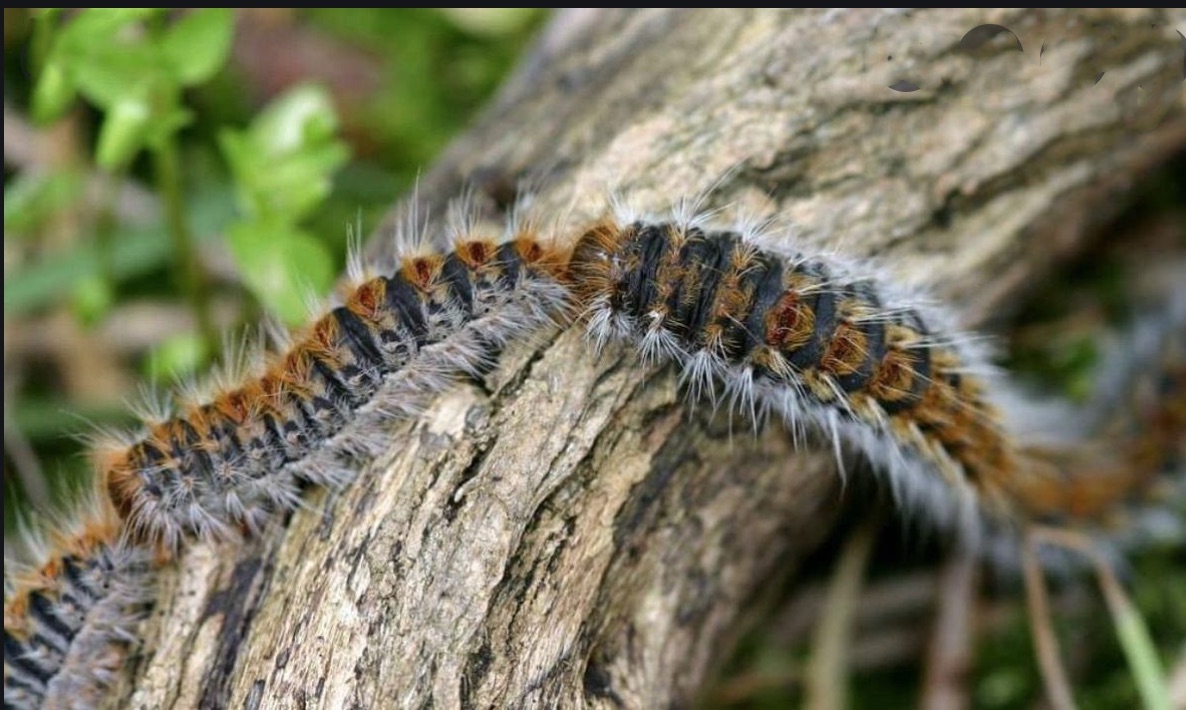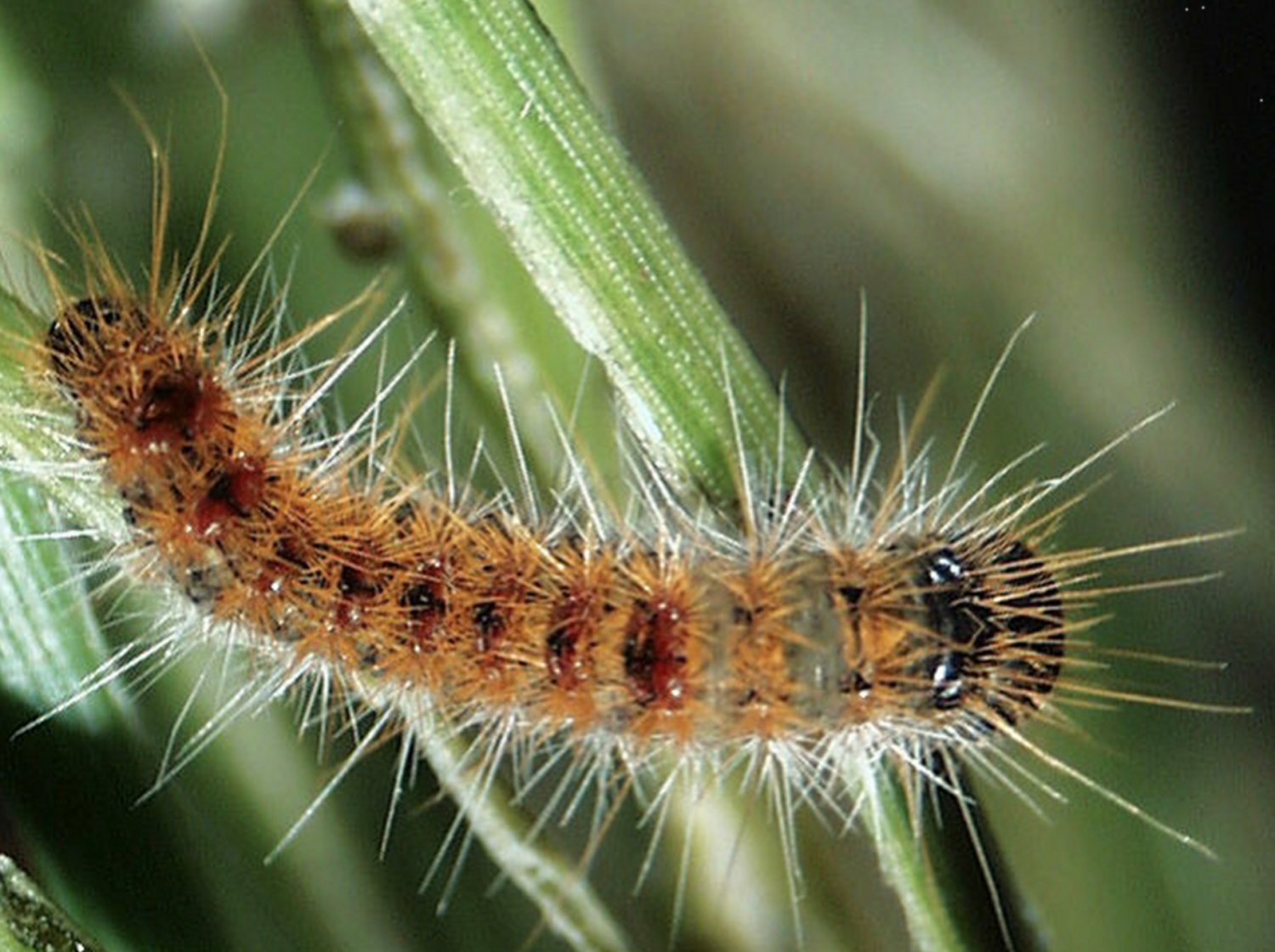A Caterpillar that Can Pose a Real Issue for our horses, pets and children
The Processionary or pine caterpillar (Thaumetopoea pityocampa Schiff) is the main defoliating insect of pines and cedars in Portugal.
From December into January/February you may notice silky spiderweb cone nests in the pine trees usually very high up. If the tree is small they can be at eye level for an adult. These nest are the home to the Lagarta do Pinheiro or Pine Caterpillar (procession caterpillar).
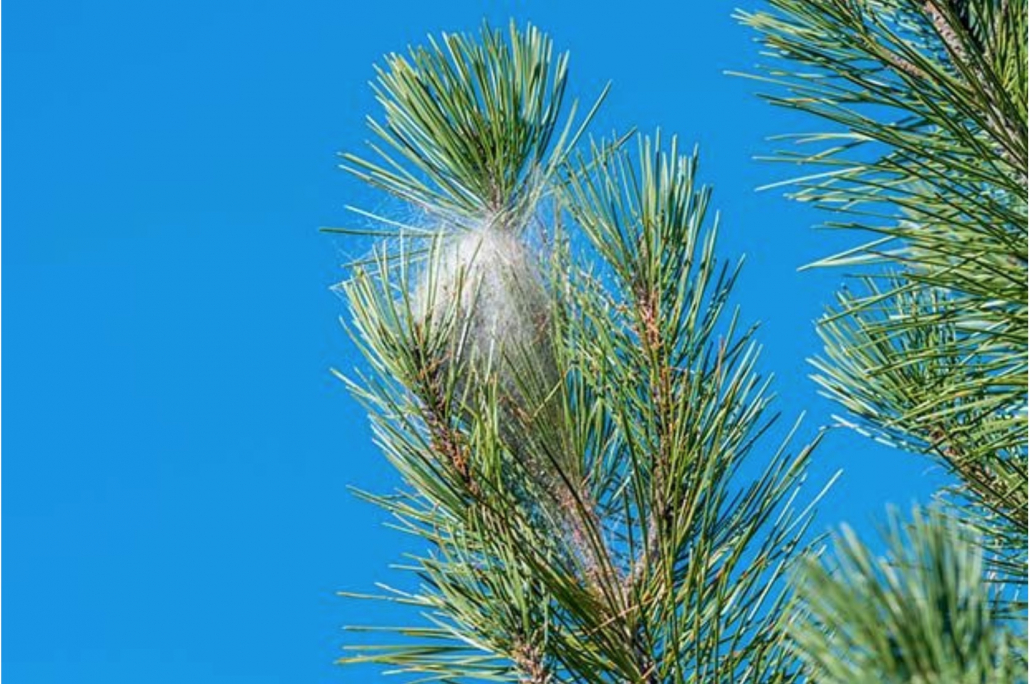
These seemly innocuous looking caterpillars are from a moth belonging to the subfamily Thaumetopoeinae which originated in Australia. The caterpillars are coloured orange-brown with blue bands. They are known for the extremely irritating hairs that cover their bodies, and the processions they perform when leaving the nest.
They also cause vast amounts of economic damage in coniferous forests. So they are considered one of the most destructive species to pines and cedars in Central Asia, North Africa and southern Europe.
Intriguing to look at but highly dangerous to touch.
Should they come into contact with inquisitive humans, dogs, cats, horses. these caterpillars can cause harm with devastating results. Everything from extreme itchiness to losing parts of the tongue or even death. In pregnant mares they can cause abortion or defects in the foal.
(In their adult form, the moth it is harmless to people and animals).
The Life Cycle
The life cycle of pine processionary moth is short, adult moths live for about a day in the summer, during which time they mate and lay eggs in pine trees.
The larvae, or caterpillars, emerge in autumn from the eggs laid in the summer, and begin feeding on the trees’ needles.
During December – January the caterpillars build distinctive, tent-like nests of white, silken, webbing up to the size of a football in the branches and foliage of pine trees. There can be several nests in a single tree. The caterpillars spend the remainder of the winter in these nests high in the trees, spending the days in these nests, and leaving them at night to forage on the trees’ needles.
Nose to tail processions
In early spring depending on the weather conditions they form nose to tail processions decending the trees via the trunks onto the ground before pupating in the soil until summer, when they emerge as adult moths. This pupal stage can, however, remain dormant for another year, or even two years, extending the life cycle over two or three years.
The caterpillars are hairy and coloured orange-brown with blue bands, and they move about in nose-to-tail processions on the trees or on the ground beneath the trees in early spring.
The Processionary or pine caterpillar (Thaumetopoea pityocampa Schiff) is the main defoliating insect of pines and cedars in Portugal.
Health Precautions
DO NOT:
- touch or approach nests or caterpillars; let children touch or approach nests or caterpillars; let animals touch or approach nests or caterpillars; and try removing nests or caterpillars yourself.
DO:
- teach children not to touch or approach the nests or caterpillars; train or restrain pets from touching or approaching them; keep horses and livestock away from infested trees – covering or stabling them can help; see a pharmacist for relief from skin or eye irritations after possible PPM contact; consult a doctor if you think you or someone in your care has had a serious allergic reaction; see a vet if you think your pet or livestock has been seriously affected; report sightings to the council authorities call in an appropriately trained and equipped arborist or pest control expert to remove infestations in your own trees.
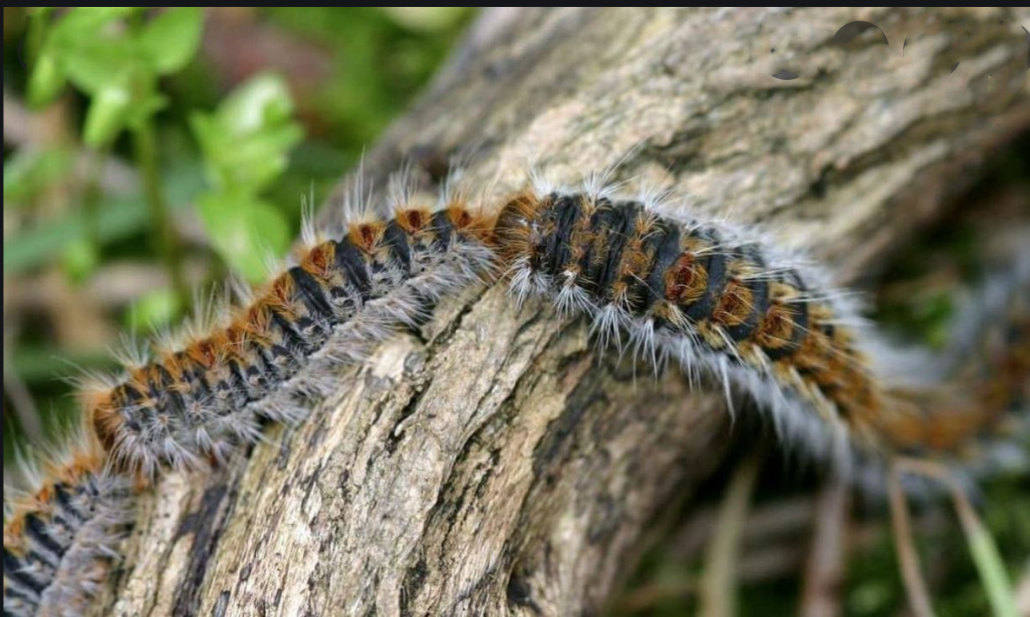
Management and Control –
Being a wildlife lover I am not an advocate of recommending the purposeful killing any species. However, if they are close enough to the house to cause a problem, there is no other option. These caterpillars might pose a threat, however, they still have an active part to play in the eco system. Yes, they also attribute to deforestation through the eating of the pine needles, but some bird species (tit family, cuckoo, for example) eat the caterpillars and the hoopoe will eat the pupae from the ground. The moth is also predated by bats.
If you do have to take action there are several ways to manage the control of this pest but in all the methods you must proceed with absolute caution.
- Removing the Nests – this should be done by a professional that knows how to carry out this task safely. If you choose to do this job yourself wear protective gloves etc.
- Sometimes the nest are far too high in the trees to reach so applying wide sticking tape around the trunk of the infected trees this helps trap the caterpillars. They stick on the tape and cannot get down the tree to the ground. Then ask someone skilled to remove them and destroy.
- As mentioned earlier some bird species are natural predators – the great tit, cuckoo and hoopoe are natural predators, along with solitary wasps and bats. Adding bird nesting boxes in the areas can attract these birds to the area. Not only this is a great support it is also perfect for natural environment development
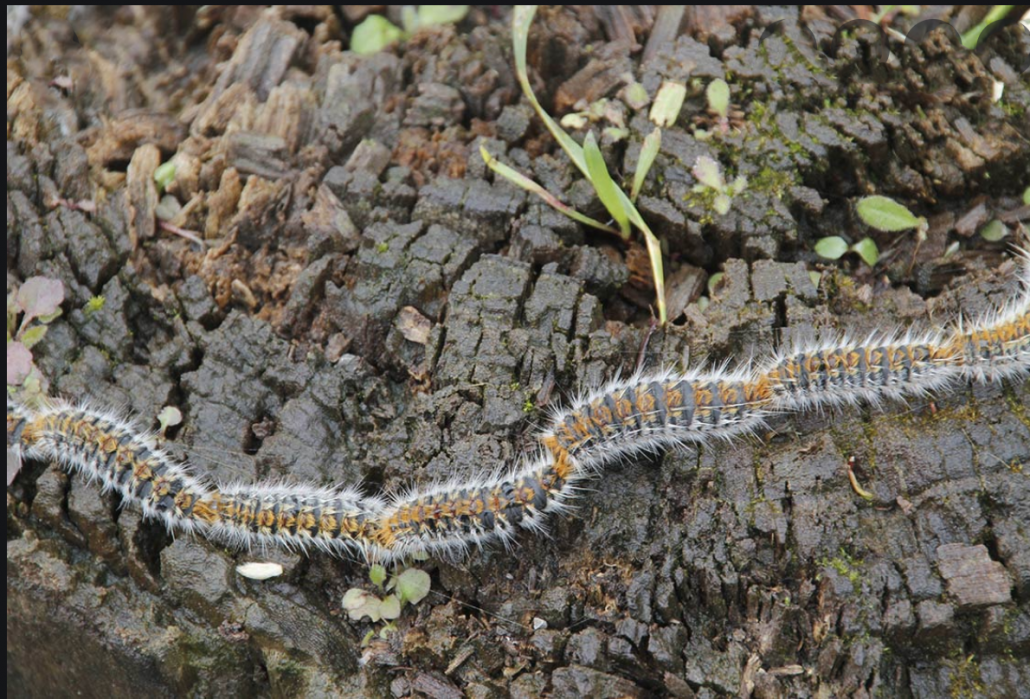
INVITING BIRDS TO HELP
A Potential Ecological Control of a Devastating Plague
These natural solutions may not completely solve the whole problem but they can can greatly reduce the threat. What’s more, you are contributing to the natural environment in a positive way. Check things you can do to attract more birds to your property.
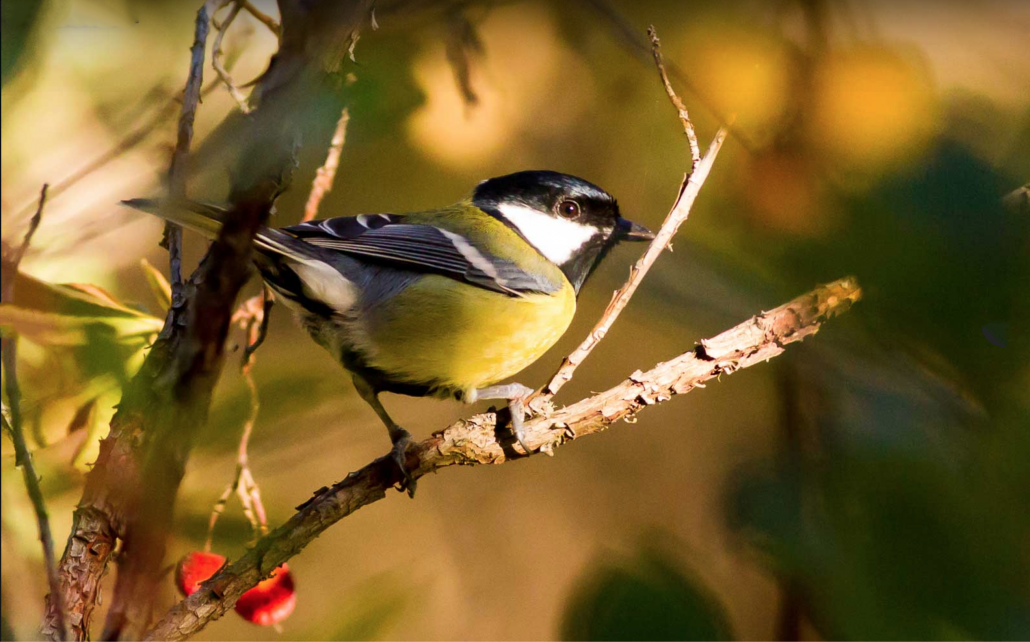
The Tit Family
The main predators of the pine caterpillar are four species of this family: Great Tit (Parus major), Blue Tit (Parus cearuleus), Crested Tit (Parus cristatus) and Coal Tit (Parus ater).
This little bird is not bothered by the stinging hairs and feeds on the caterpillar. Predominantly insectivorous, the Tit is one of the few birds that can eat the pine caterpillar. In the winter months it consumes a wide range of other foods such as berries and seeds. It is recommended that during winter months you can hang bird feeders of seeds, nuts and fats to attract them to the area.
The population of this little bird is often reduced by the lack of shelter in the places where they can have an ecological and protective action over the processionary caterpillar.
The placement of birdhouses creates more favourable conditions for the increase of this species.
Placing birdhouses in areas affected by the pests, means the tits can nest and reproduce in a controlled and safe environment, protected from their predators, namely the squirrel, the hawk, the cuckoo and the woodpecker, among others.
The birdhouses should be placed from September to October, when the tits start looking for places to nest safely. Place the nest with the entrance facing north and the height of the nest must be between two and four meters high.
The Hoopoe Bird
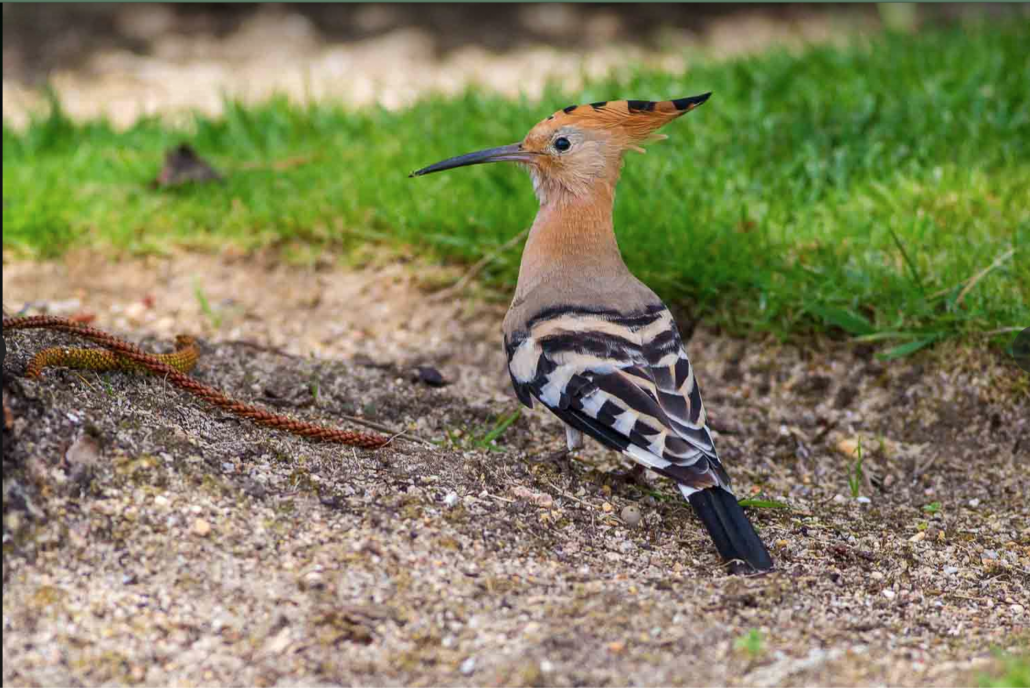
This unmistakable medium-sized, pink bodied bird is one of the most exotic species to occur in Europe. Hoopoes are common throughout Iberia with the largest population in Portugal south of the Tagus. These warmer regions also host most of the wintering birds but it is unclear whether these are local residents, birds which have moved south from Continental Europe or a mix of the two.
Hoopoes are carnivorous, feeding almost entirely on caterpillars, large insects, such as crickets and grasshoppers, the larvae and pupae of moths, butterflies. They will even take larger prey such as frogs and lizards. The powerful, curved bill is used both for stabbing and digging out grubs and worms.
Holes in trees are the Hoopoes’ favourite nest sites but they will use cavities in buildings and burrows in banks.
The Common Cuckoo
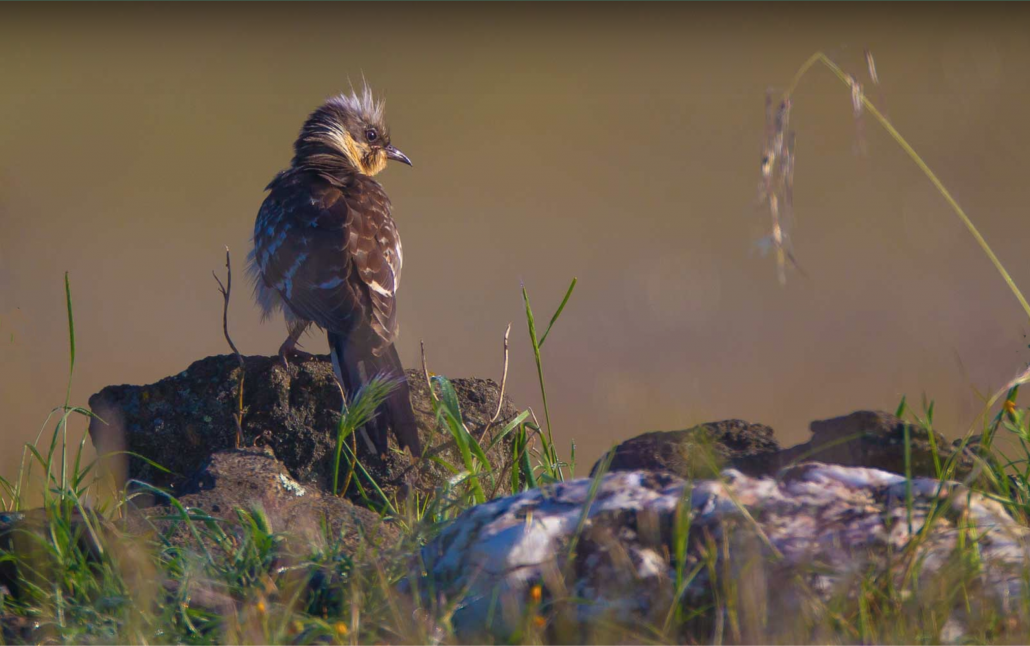
This bird has is mostly spotted in the Alentejo in Portugal but is found throughout Europe. Arriving from Africa in February. It is a distinctive grey bird that favour open grounds and plains. The male has the well known call of goo-ko which he performs when searching for a female.
The Common Cuckoo’s diet consists of insects, with hairy caterpillars, which are distasteful to many birds, being a specialty of preference. It also occasionally eats eggs and chicks.
The Common Cuckoo is a brood parasite; it lays its eggs in the nests of other birds. At the appropriate moment, the hen cuckoo flies down to the host’s nest, pushes one egg out of the nest, lays an egg and flies off. The whole process takes about 10 seconds. A female may visit up to 50 nests during a breeding season.
Written By Teresa Burton
OTHER ARTICLES THAT MAY INTEREST YOU ABOUT LIVING IN PORTUGAL, LUSITANOS etc
Sources –
Birds https://birdwatchingalentejo.com. Images of Hoopoe, Great Tit and Cuckoo by Frank McClintock who has a beautiful Eco friendly holiday farm in the Alentejo www.paradise-in-portugal.com
Caterpillars –
Low T. Hairy and dangerous. Australian Geographic 2017. http://www.australiangeographic.com.au/blogs/wild-journey/2017/06/hairy-and-dangerous. Accessed March 2018.
ABC news. http://www.abc.net.au/news/ rural/2018–02–06/processionary-caterpillar-threat-to-horses-guidelines- released/9399328. Accessed March 2018.

